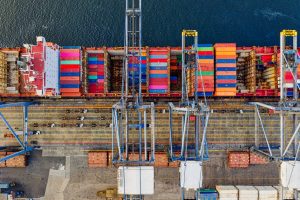The Comprehensive and Progressive Agreement for Trans-Pacific Partnership (CPTPP) is a free trade agreement between Canada and 10 Asian-Pacific countries. Together, these countries represent 15.6% of global GDP and over 580 million consumers, offering countless ways for Canadians to grow their businesses in Asia.
Free trade agreements lower trade barriers, making it simpler and less costly to export to participating countries. Free trade agreements are best known for reducing or removing tariffs, costs that are often applied when shipments cross borders.
The CPTPP came into effect in March 2018 between Canada, Australia, Brunei, Chile, Japan, Malaysia, Mexico, New Zealand, Peru, Singapore and Vietnam. In July 2023, the United Kingdom signed paperwork to join the CPTPP and will soon be able to participate in the agreement.
CPTPP eliminates tariffs on 98% of Canadian exports, helping Canadian businesses compete in the Asia-Pacific region.
CPTPP offers many non-tariff related benefits to small and medium businesses, such as:
- Simplified Rules: Rather than having to understand the trade requirements for multiple countries, CPTPP offers a single set of rules and makes trade information available online for business owners.
- Minimized Barriers: CPTPP removes the hurdles faced by Canadian businesses, helping to lower the cost of exporting. For example, CPTPP streamlines customs clearance processes and addresses potential challenges with digital trade.
Benefits for British Columbia
CPTPP is especially good news for businesses in B.C. Key findings of the 2019 CPTPP Tracker Report showed that B.C. was one of the top two provinces exporting to CPTPP markets during the first year of the agreement. Specifically, Mexico is a key trading partner, with B.C. exports to Mexico totaling $179 million in 2022.
CPTPP helps open new markets for British Columbian businesses by removing tariffs on many of B.C.’s main exports, including:
- Fish and seafood such as salmon and herring.
- Agricultural and agri-food products including pork, wine and fruits.
- Industrial goods like metals and plastics.
- Forestry and lumber products such as newsprint and uncoated paper.
Free trade agreements work both ways, so B.C. businesses that need to import products or materials to support their business can also enjoy more competitive pricing and reduced customs delays.
Making CPTPP Work for Your Business
While CPTPP can help you grow your business in the Asia-Pacific region, reduced tariffs are not automatic. There are a few key steps you can take to make sure your business benefits from CPTPP:
- Find the right tariff code: Globally, the harmonized system is used to give products a tariff code. The tariff code helps to identify your product, making sure it is imported correctly. Use the Canada Tariff Finder to find the right code for your product.
- Understand the tariff rate: The Canada Tariff Finder will explain the tariffs or duties associated with your product.
- Make sure your product meets rules of origin: Many products are made using resources and materials from all over the world. The rules of origin determine how much of a product must originate in Canada for it to be considered eligible under CPTPP.
- Claim reduced tariffs: Make sure you include all relevant tariff information before your product is shipped, so that customs authorities know your product qualifies under CPTPP.
Identify the Right Trade Agreement for You

Canada has 15 active free trade agreements with countries all over the world; some countries are included in multiple trade agreements with Canada. For example, Chile participates in both CPTPP and the Canada-Chile Free Trade Agreement.
To get the best value for your business, you can compare tariff rates for your products using the Canada Tariff Finder. Depending on your business’s product or service, some free trade agreements may work better for your business than others.
The Canada Tariff Finder helps you find the correct tariff code under the right FTA, so your products can enjoy the benefits that the agreement offers.
Learn More About Exporting to the Asia Pacific Region
Not sure which free trade agreement is best for you? Eager to export but need guidance to begin?
Export Navigator’s team of experienced advisors can help. Connect today to learn more about the resources available to help you grow your business in the Pacific.



